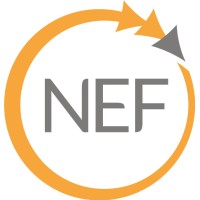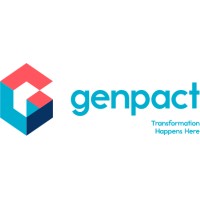Company Cyber Security Posture
NANA
NA Company Details
NA
NA
NA
NA
NA
NA
Scan still pending
NA
NA
Between 200 and 800
This score is AI-generated and less favored by cyber insurers, who prefer the TPRM score.
 NA Global Score
NA Global Score.png)

Company Scoring based on AI Models
| Model Name | Date | Description | Current Score Difference | Score |
|---|---|---|---|---|
| AVERAGE-Industry | 03-12-2025 | This score represents the average cybersecurity rating of companies already scanned within the same industry. It provides a benchmark to compare an individual company's security posture against its industry peers. | N/A | Between 200 and 800 |
Company Cyber Security News & History
| Entity | Type | Severity | Impact | Seen | Url ID | Details | View |
|---|
Company Subsidiaries

NA
Access Data Using Our API

Get company history
.png)
NA Cyber Security News
They Wanted Bigger Space in a Smaller Building in Brooklyn. Friendly Neighbors a Plus.
They Wanted Bigger Space in a Smaller Building in Brooklyn. Friendly Neighbors a Plus. · Katherine Marks for The New York Times · Compass. No. 2.
Memphis People in Business: Feb. 3, 2022
A look at promotions, hirings, movers and newsmakers in the Memphis area business scene.
Fidelity facing class action suit after cybersecurity attack
Big Four title firm Fidelity National Financial and its subsidiary mortgage subservicer Loancare are facing a class action lawsuit alleging ...
2024 BOB Award winners
Longchamps. Longchamps is a full-service electrical contractor capable of handling projects of all sizes and scope. The firm also provides ...
Keller Williams expands to Saudi Arabia, awards master franchise
With this new addition, Keller Williams will have 11 master franchises in Asia with over 1,400 agents. The company has also appointed Muhanad ...
Inc.'s Best Workplaces in Austin; Perks range from free food to $3,000 to 'learn anything'
Career & Workplace. Inc.'s Best Workplaces in Austin; Perks range from free food to $3,000 to 'learn anything'.

NA Similar Companies

NEF
NEF, Inc., is a professional services firm specializing in several key areas of IT infrastructure, including cloud, multi-national connectivity, data center and colocation, and business IT optimization. As a leading IT infrastructure advisement resource, NEF leverages decades of experience and subj

Empire Company Limited
Empire Company Limited (TSX: EMP.A) is a Canadian company headquartered in Stellarton, Nova Scotia. Empire’s key businesses are food retailing, through wholly-owned subsidiary Sobeys Inc., and related real estate. With approximately $30.5 billion in annual sales and $16.5 billion in assets, Empire C

Megaworld at The Fort
Megaworld is the Philippines' largest residential condominium developer and business process outsourcing office developer and landlord. It has an unprecedented track record of completing more than 250 residential buildings, office towers, commercial centers, and world-class hotels since 1989. Meg

Genpact Mortgage Services
The changing scope of today's mortgage landscape has lenders looking for innovative solutions to meet fluctuating demand and counter higher default levels. Genpact's mortgage processing services leverage worldwide delivery capabilities, modern technology, and smarter analytics to design, transform,

City Developments Limited
City Developments Limited (CDL) is a leading global real estate company with a network spanning 163 locations in 29 countries and regions. Listed on the Singapore Exchange, the Group is one of the largest companies by market capitalisation. Its income-stable and geographically-diverse portfolio comp

Emaar
WHO WE ARE Emaar is a pioneer of master-planned communities in Dubai since its inception in 1997. It is listed on the Dubai Financial Market as a public joint-stock company. Building upon the legacy of our flagship Downtown Dubai creations — the iconic Burj Khalifa, Dubai Mall, and Dubai Fountain —

Frequently Asked Questions
Explore insights on cybersecurity incidents, risk posture, and Rankiteo's assessments.
NA CyberSecurity History Information
How many cyber incidents has NA faced?
Total Incidents: According to Rankiteo, NA has faced 0 incidents in the past.
What types of cybersecurity incidents have occurred at NA?
Incident Types: The types of cybersecurity incidents that have occurred include .
Additional Questions
What Do We Measure?
















Every week, Rankiteo analyzes billions of signals to give organizations a sharper, faster view of emerging risks. With deeper, more actionable intelligence at their fingertips, security teams can outpace threat actors, respond instantly to Zero-Day attacks, and dramatically shrink their risk exposure window.
These are some of the factors we use to calculate the overall score:
Identify exposed access points, detect misconfigured SSL certificates, and uncover vulnerabilities across the network infrastructure.
Gain visibility into the software components used within an organization to detect vulnerabilities, manage risk, and ensure supply chain security.
Monitor and manage all IT assets and their configurations to ensure accurate, real-time visibility across the company's technology environment.
Leverage real-time insights on active threats, malware campaigns, and emerging vulnerabilities to proactively defend against evolving cyberattacks.




